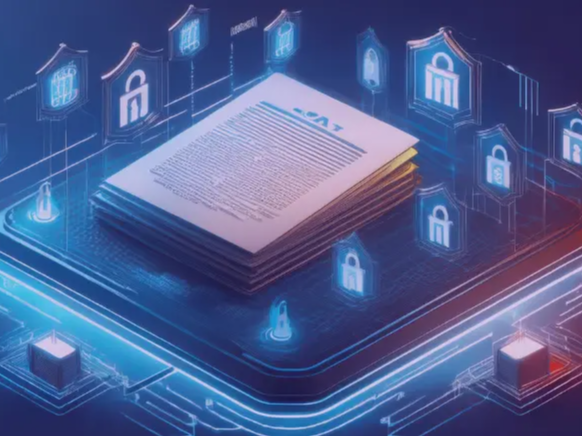Introduction: Why Everyone’s Asking “Are We in an AI Bubble?”
If your feed looks like an AI infomercial, you’re not alone. Funding rounds move at breakneck speed, GPUs feel like concert tickets, and every product pitch has “AI-powered” somewhere in the first sentence. That mix of euphoria and anxiety—that’s the bubble question poking at you. Are we witnessing the next dot-com mania, or the early innings of a decades-long platform shift?
The Rocketship Feeling vs. the Sinking-Stomach Risk
Both can be true. Technology revolutions often arrive with a crowd and a crescendo. The trick isn’t to call the top; it’s to tell the difference between froth and fundamentals, then act accordingly. This guide lays out a practical, step-by-step way to do exactly that.
What Is an “AI Bubble,” Exactly?
A bubble happens when prices and expectations outrun reality. It’s not just about high valuations—it’s about fragile narratives, copy-paste business models, and unit economics that never quite work unless the music keeps playing. In AI, the “price” is broader than stock charts: think model training budgets, headcount, cloud commitments, and the opportunity cost of betting on the wrong layer of the stack.
Bubbles vs. Adoption Waves
Not every boom is a bubble. The internet in the late ’90s had a bubble, but the underlying adoption wave changed the world. Same with smartphones. The key insight: bubbles tend to misallocate capital in the short term but accelerate infrastructure for the long term. In other words, the party leaves a useful mess.
The Hype Cycle in Plain English
The hype cycle is basically our emotional rollercoaster: discovery → overpromise → disillusion → useful, boring progress. In AI, we’re somewhere between the peak of inflated expectations and the long road of operationalizing value. That’s normal. What matters is whether your bet survives the comedown.
Why the Bubble Talk Now?
Because the ingredients lined up: dramatically better foundation models, cheap-ish access via APIs, massive GPU supply buildout, and a gold rush of capital and talent. When breakthroughs and budgets spike together, narrative heat follows.
Four Catalysts: Compute, Models, Data, and Capital
- Compute: Specialized hardware and cloud capacity make large-scale inference feasible for mainstream use.
- Models: Capability jumps (reasoning, multimodal I/O, tools) push new classes of tasks into the “automatable” zone.
- Data: Better curation and domain-specific corpora improve quality and reduce hallucinations.
- Capital: Money and talent surge toward anything that translates model capability into business value.
Five Classic Bubble Signals to Watch
Price Signals: Valuations and Revenue Reality
Look for a mismatch between promised TAM and actual revenue quality. Are customers paying for outcomes or experiments? Are contracts short, pilots perpetual, and expansions slow? If so, valuation heat may be ahead of traction.
Narrative Signals: “We’re AI Now!” Rebrands
When companies pivot branding faster than product value, it’s a tell. Slapping “AI” on everything is like sprinkling glitter: shiny, messy, and hard to vacuum out of your slide deck later.
Behavioral Signals: FOMO, GPU Hoarding, and Meme-onomics
Buying compute before you know your use case. Chasing benchmarks no customer asked for. Shipping demo theater while sales teams sell vapor. Hype is loud; product-market fit is quiet.
Macro Signals: Rates, Capex Booms, and Cycles
High-rate environments punish long-duration cash flows and elevate capital efficiency. Meanwhile, capex booms (hello, data centers) can overshoot real demand—then reverse hard.
Fragile Moats: When Copycats Catch Up Overnight
If a competitor can replicate your core experience by chaining a few public APIs and a retrieval plugin, you don’t have a moat—you have a moment.
What’s Real: Durable AI Value That’s Hard to Ignore
Despite the froth, there’s concrete value that no sober operator can dismiss. AI is compressing cycle times, reducing toil, and upgrading the quality of work across functions.
Enterprise Use Cases That Already Work
Customer Support Automation
Deflection rates improve when bots actually understand policy, tone, and history. The sweet spot: hybrid flows—bots triage and draft; humans approve and resolve edge cases. Measurable ROI: lower handle times, better CSAT, fewer escalations.
Developer Productivity and Code Assistance
Code assistants turn “I think I know” into “ship it” by scaffolding, refactoring, and test generation. The benefits compound: faster cycles, fewer bugs, more time for architectural thinking.
Content Operations and Knowledge Management
RAG (retrieval-augmented generation) and structured prompts help teams author, translate, summarize, and enforce style or compliance. The payoff is consistency at scale.
Decision Support and Analytics
From sales forecasts to anomaly detection, AI narrows the gap between data and decisions. The winners build “explain + act” loops, not just pretty dashboards.
Unit Economics That Actually Improve Over Time
Great AI products get cheaper and better as usage grows:
- Fine-tuning and better prompts reduce token spend.
- Caching, distillation, and small specialized models offload expensive calls.
- Human-in-the-loop yields cleaner training signals and lower rework.
The Moat Question: Where Sustainable Advantage Comes From
Data Moats (Quality > Quantity)
Everyone says “we have data.” Few have the right data. Advantage comes from labeled, permissioned, context-rich corpora with feedback loops. Think: proprietary event streams, domain taxonomies, and outcomes tied to ground truth.
Distribution Moats (Where the Work Already Happens)
Embedding into daily workflows (CRMs, IDEs, EHRs, ERPs) builds inertia. Sidecar tools are easy to try and easy to drop; deeply integrated copilots become muscle memory.
Model/Infra Moats (Thin vs. Thick Wrappers)
Thin wrappers around public models are fast to build—and fast to copy. Thick wrappers combine orchestration, guards, evals, and domain reasoning. They look like “systems,” not “prompts.”
How to Evaluate an AI Product or Startup (A Practical Framework)
Problem-First, Not Model-First
Ask: If AI vanished, would this product still be valuable? If the answer is “no,” it’s probably a demo disguised as a business.
Retention, Re-Engagement, and Workflow Depth
Weekly active users are vanity if the tool isn’t embedded in the job-to-be-done. Look for:
- Task completion inside the product (not bouncing to other tools)
- Expansion revenue tied to seats, usage, or new workflows
- Cohort retention that stabilizes as the product matures
Gross Margin, COGS, and Token Discipline
Healthy AI margins require discipline:
- Route easy tasks to smaller/cheaper models
- Cache repeat prompts and results
- Use RAG to supply facts instead of pushing reasoning onto large models
- Monitor cost per action, not just cost per token
Security, Compliance, and Governance
Serious buyers care about data boundaries, auditability, and red-team results. If a vendor can’t speak to isolation, logging, and incident response, keep walking.
Build vs. Buy: When It’s Better to Integrate
Many companies should integrate best-in-class APIs and focus on proprietary glue: data pipelines, domain schemas, and workflow UX. Buy the commodity; build the advantage.
Common Myths About the AI Bubble
“Models Will Commoditize Everything”
Models may get cheaper, but capability, latency, tooling, and trust won’t converge evenly. Value shifts to orchestration, evaluation, domain constraints, and data semantics—areas where “free” isn’t enough.
“Incumbents Will Crush Every Startup”
Incumbents have distribution; startups have focus. The winner is whoever solves painful problems faster and proves it with metrics. Plenty of surface area remains for specialists.
“All the Value Goes to Chips”
Infrastructure captures value early in a build-out, but over time, software and services that convert compute into outcomes take larger slices. Think layers, not a single winner.
Scenarios: Bubble, Boom, or Both?
Soft Landing (Selective Deflation)
Some categories reprice, vanity projects fade, but the core stack keeps compounding. Strong operators gain share as tourists exit.
Hard Pop (Rapid Repricing)
If macro turns sharply or results disappoint at scale, expect a flight to quality. Survival favors positive unit economics and must-have workflows.
Slow Burn (Plateau and Grind)
Growth continues but expectations cool. The market rewards teams that tighten ops, reduce cost-per-outcome, and iterate relentlessly.
Playbooks for 2025 and Beyond
For Operators and Product Leaders
- Pick a hair-on-fire problem. Shave hours off painful tasks, not minutes off nice-to-haves.
- Instrument everything. Define success metrics (time saved, errors reduced, revenue per user) before you ship.
- Design for control. Human-in-the-loop and explainability beat black boxes in regulated domains.
- Architect for cost. Smart routing, caching, and evals are your margin engine.
For Investors and Boards
- Underwrite workflow depth, not just logos. Expansion > land.
- Demand unit-economics roadmaps. How do margins improve at 10× scale?
- Back compounding learning loops. Data + feedback + iteration speed is the new network effect.
For Job Seekers and Builders
- Stack skills. Pair domain expertise with AI tooling. Be the bridge, not the bystander.
- Show outcomes. Portfolios with before/after metrics beat buzzwords.
- Learn the economics. Knowing how prompts work is good; knowing how margins work is better.
Ethics and Society: Guardrails That Outlast the Hype
Bias, Transparency, and Safety by Design
Responsibility isn’t a press release—it’s architecture. Bake in dataset documentation, bias testing, red-teaming, and escalation paths. Trust compounds faster than hype and lasts longer when markets turn.
The 10-Question Bubble-Proof Checklist
Use This Before You Commit
1) Mission-Critical?
If this tool vanished tomorrow, would the team scramble? Mission-critical beats “nice-to-try.”
2) Measurable ROI?
Can you quantify time saved, quality improved, or revenue gained within one quarter?
3) Switching Costs?
Does it store history, learn preferences, and integrate deeply enough to make churn painful?
4) Workflow Embed?
Does the work start and end in this product, or is it a tab you forget?
5) Data Advantage?
Will usage create unique, permissioned signals that improve results over time?
6) Margin Path?
Is there a clear plan to route tasks to cheaper models, cache, and trim token burn?
7) Compliance Ready?
Does it meet your industry’s security and audit requirements today, not “soon”?
8) Vendor Risk?
If a single provider changes pricing or policy, does your product break?
9) Human-in-the-Loop?
Are there controls for review, escalation, and overrides where it actually matters?
10) Iteration Velocity?
How fast can the team ship, learn, and course-correct with real user feedback?
Conclusion: Don’t Fear the Bubble—Outlearn It
The “AI bubble” debate can be paralyzing. Here’s the reality: bubbles and breakthroughs often coexist. Some projects will deflate; others will mint category leaders. Your edge isn’t prediction—it’s preparation. Choose painful problems. Measure real outcomes. Build moats with data, distribution, and relentless iteration. If hype is the tide, operational excellence is your keel.
FAQs
1) Is the AI market in a bubble right now?
Parts of it show bubble traits (frothy valuations, me-too products), while core categories already deliver durable ROI. Expect selective deflation, not a universal collapse.
2) What’s the single best metric to judge an AI product?
Track cost per successful outcome (not just tokens or clicks). If that falls as usage grows, you’re on the right track.
3) Will cheaper models kill startup moats?
Not if moats are built on data quality, workflow depth, evaluation systems, and distribution. Cheaper models actually make well-architected products more profitable.
4) Should we build our own model or use APIs?
Default to APIs unless you have unique data, scale, or latency/security needs that justify ownership. Build the glue—buy the commodity.
5) How do I spot hype in a vendor pitch?
Ask for: (a) measurable ROI within 90 days, (b) security/compliance specifics, (c) a margin-improvement roadmap, and (d) references with before/after metrics. If answers are vague, it’s probably sizzle over steak.








